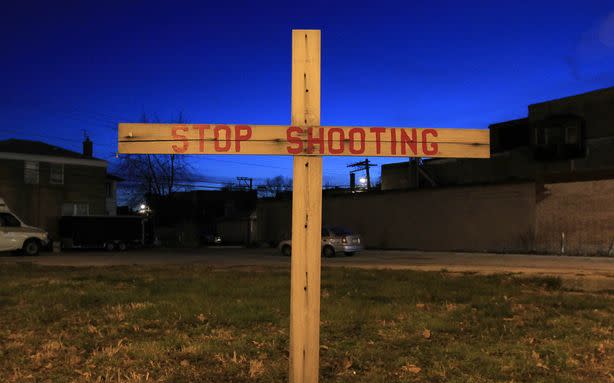Chicago Murders Are Trending Opposite of the Al Capone Years

Your perception of Chicago's murder problem isn't quite correct. While the city has seen a rash of shootings, many deadly, the murder rate, as The New York Times reported on its front page Tuesday, is actually at a low for the year, on-pace with the 1960s. But it is also at a low point — and moving in several new directions — compared to another era of high crime in Chicago: Prohibition.
RELATED: Chicago's Memorial Day Weekend Was Terrible
The Times report points out that, since January 1, Chicago has only experienced 146 murders. That's a lot, to be sure, but it's 34 percent less than for the same period in 2012 — a year in which the city saw a 16 percent uptick in deaths. That uptick helped contribute to a sense of a city besieged with murders, with each death and shooting spree leading to national attention. Nor is the decline doing much to assuage concerns.
“It seems a little soon to know whether this is a long-term trend,” said Jens Ludwig, director of the University of Chicago Crime Lab. “I think everyone in Chicago hopes it is very much a trend. I wouldn’t pop the Champagne yet, but I’m keeping my fingers crossed.”
In some of the most crime-ridden neighborhoods — even those where statistics suggest clear improvement — some residents say they feel as unsafe as ever, and worry that the closing this fall of the largest number of elementary schools in recent memory may force schoolchildren to venture down blocks controlled by gangs to get to new schools.
There's no question, though, that Chicago is safer than it was 20 years ago. In 1992, murders hit a recent peak. In fact, the trend over the past two decades is something of a mirror image of the sharp increase that afflicted the city with the passage of Prohibition in 1920. Northwestern University compiled crime data in Chicago from 1870 to 1930, including a catalog of the murders. Here's what the pre-Prohibition and recent homicide trends look like. Those 500 murders in 2012 are fewer than the city saw in 1924, the year of the trial of Leopold and Loeb.
RELATED: Another Violent Weekend in Chicago
What's most interesting from that Northwestern data, though, is how the geography of the murders has changed over the last century. The City of Chicago offers data on its last 12 months of crime. Comparing that period to the equivalent period exactly 100 years ago, you can see how the location where the murders have taken place has shifted, out of downtown and into the surrounding area.
RELATED: Chicago's Grim 38% Murder Spike
RELATED: Severe Storms Are Harshing On Lollapalooza's Vibe
As The Times notes, the trend in Chicago is good. Last year may have just been a hiccup in a continuing, slow decline. A century ago, the city was just starting to climb that mountain. In case you're wondering, about 10 percent of the last 12 months of crime — 33,053 of the city's 313,923 offenses — were also due to prohibition. Of narcotics.
RELATED: The Close Calls of Whitey Bulger
Photo: A marker at the site of one of the city's shootings. (AP)
